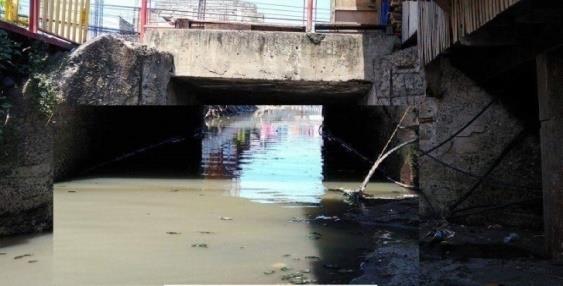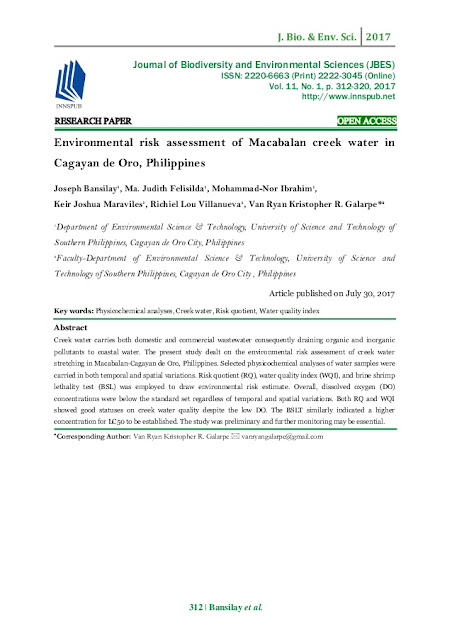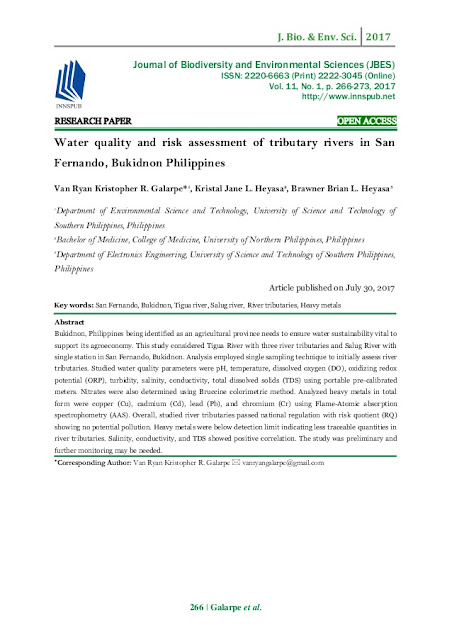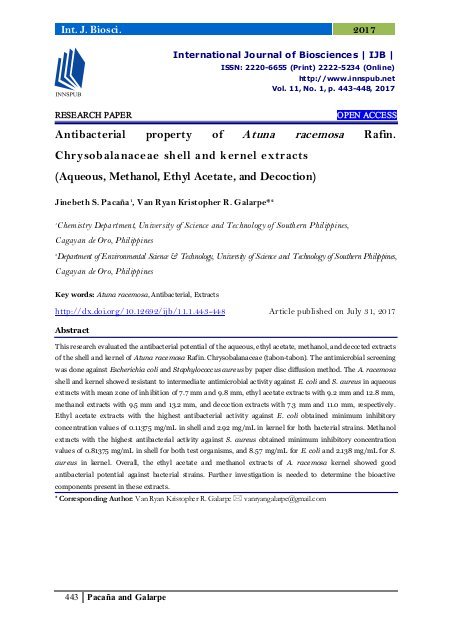By: Joseph Bansilay, Ma. Judith Felisilda, Mohammad-Nor Ibrahim, Keir Joshua Maraviles, Richiel Lou Villanueva, Van Ryan Kristopher R. Galarpe
J. Bio. & Env. Sci. 2017
Abstract:
Creek water carries both domestic and commercial wastewater consequently draining organic and inorganic pollutants to coastal water.
The present study dealt on the environmental risk assessment of creek water stretching in Macabalan-Cagayan de Oro, Philippines. Selected physicochemical analyses of water samples were carried in both temporal and spatial variations. Risk quotient (RQ), water quality index (WQI), and brine shrimp lethality test (BSL) was employed to draw environmental risk estimate. Overall, dissolved oxygen (DO) concentrations were below the standard set regardless of temporal and spatial variations. Both RQ and WQI showed good statuses on creek water quality despite the low DO.
The BSLT similarly indicated a higher concentration for LC50 to be established. The study was preliminary and further monitoring may be essential.























